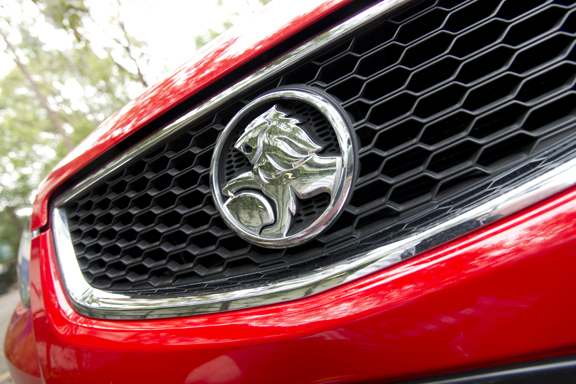By Anna Mortimore, Griffith Business School
The future viability of Holden’s local car manufacturing is in doubt.
This was supposedly addressed on 22 March 2012, when the Prime Minister announced the $275 million “co-investment” with the Australian Government, as well as the Victorian and the South Australian governments, in the future of GM Holden’s car making operations in Australia.
In return for this investment, GM Holden would continue making cars until at least 2022, which would “support thousands of jobs at Holden that would have been lost”, and “return around $4 billion to the Australian economy”.
Despite this agreement, Holden’s managing director, Mike Devereux announced on 8 April, 2013, that GMH will need to slash 500 jobs from it is manufacturing plant in South Australia and Victoria.
Mr Jay Wetherill, the South Australian Premier said on 8 April 2013, that Holden had breached its agreement with his Government, and that he would be assessing whether to claw back the $50 million given to Holden.This announcement comes just five months after Holden announced the last 170 job losses in Adelaideand two weeks after the revelation that the company had received $2.2 billion in subsidies over 12 years.
No “guarantees”
Mr Devereux refused to give any guarantees on “… how many cars will be sold in 2016 or 2022” or whether the Australian plants will close soon. Mrs Mirabella of the coalition party is calling for another review by the Productivity Commission.
However the Productivity Commission has reviewed this ongoing debate concerning the future of the car industry since 1990. In its review of the Automotive Industry in 1997, the Productivity Commission stated that the automotive industry would face important decisions about its future, which will be determined by the actions of the foreign parent companies, which will be driven by two contrasting views of the role of the Australian subsidiary:
The first view will see the subsidiary as an integral part of the parent’s global strategy with opportunities for Australia.
The second view would see the Australian subsidiary through the distorted prism of the level of assistance provided by the Australian community.
Unfortunately, the second view has prevailed. The whole “co-investment” agreement in providing Government assistance is to ensure that the industry remains in Australia and guarantees jobs.
But if sales of the motor vehicle being produced in Australia are falling, (Commodore sales in Australia decreased from 94,642 in 1998 to 30,532 in 2012then how can jobs be guaranteed?
Loss of jobs and production in Australia is not all attributable to high Australian currency, or because the chief executive of the Federal Chamber of Automotive Industries, (FCAI) Mr Weber believes “Australia needs to beat down non tariff barriers across South-East Asia for the domestic car manufacturing to remain viable.”He explains by criticising Thailand’s excise taxes on cars has a negative impact on exports of cars to the country, and provides the example that the Ford Territory is advertised in Thailand at a “retail price of $99,000, twice the Australian price.”
With such comments by the FCAI and the continuing production of large fuel inefficient and high carbon emitting passenger vehicles by GM Holden and Ford, defies the market transformation that is occurring in the global car manufacturing industry.
Fuel efficiency standards
Governments of the largest global car manufacturers introduced mandatory fuel efficiency standards to support the technological development of new fuel-efficient, low carbon emitting vehicles.
For example, global car manufacturers are required to manufacture cars that will meet the following fuel efficiency or carbon emitting targets: EU – cars manufactured must emit emissions of 130g /km, equivalent to fuel efficiency of 5.6L/100kilometres by 2015; Japan’s target by 2015 is 125g of CO2/km (5.38L/100 km); China’s target by 2015 7L/100km (162gCO2/km).
Thailand, the country Mr Weber criticised, imposes higher excise taxes to discourage the locals from acquiring fuel inefficient, high emitting vehicles such as the Ford Territory. If Australia had imported a vehicle that had emissions of no more than 120g of CO2/km, then the Thailand’s excise taxes would have been cut from 30 per cent to 17 per cent.
Australia could follow the European Union example of applying mandatory CO2 emission standards to all cars manufactured and imported into the country.
For example, if the mandatory emission standards were set at 170g of CO2/km, Holden would have been required to spend the Government subsidies in the technological redesign of the Commodore to comply with the new mandatory CO2 emission standard. Holden would have developed a diesel or hybrid and or a fully electric Commodore.
Importers whose new vehicles failed to satisfy this CO2 mandatory emission standard, and would not have been allowed to sell their vehicles in Australia or the Australian Government, like Thailand would have imposed high vehicle taxes.
Holden would have been able to reclaim their market as large car buyers would have returned to the locally produced large passenger vehicles because most SUV’s would have failed to meet this standard.
Therefore the call for another review by Productivity Commission should examine whether any proposed restructure of the Motor Vehicle Industry can manufacture cars that can compete with global markets and satisfy international mandatory fuel efficiency and or carbon emission standards If so, Government policy measures should be introduced to support the car industry as is the case in countries like Thailand and in the European Union.
Ms Anna Mortimore is a lecturer in the Griffith Business School. Her research expertise includes Environmental Taxation Law, Impact of Taxation Law on Energy Efficiency and Greenhouse Effect.
